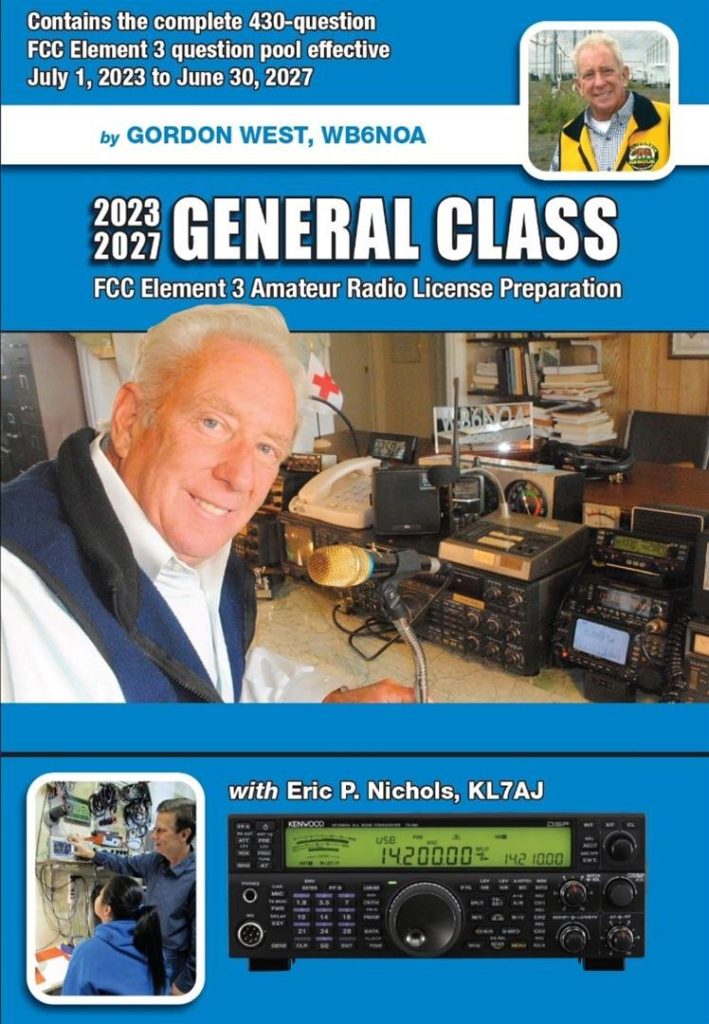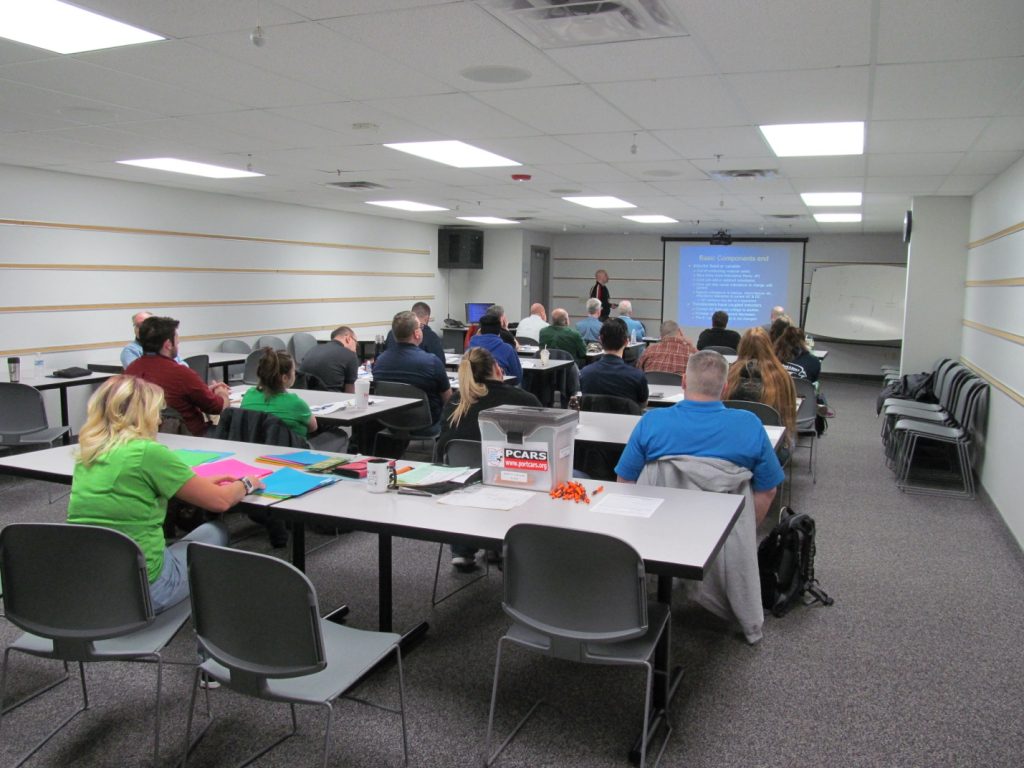Whether you’re interested in emergency communication, electronics, or just want to talk to people worldwide, passing the ham radio test is the first step. To get licensed, you need to demonstrate an understanding of FCC regulations as well as knowledge of radio station operation and safety considerations by taking a written test.
When was the last time you took a test and had access to all the answers? The question pool for the ham radio exam is public knowledge; you have access to all the possible questions and answers before taking the test. The National Conference of Volunteer Examination Coordinators (NCVEC) provides a downloadable pool of questions and answers for the Technician, General, and Extra tests. But there’s a lot to remember. Currently, the pools contain 411, 454, and 621 questions, respectively.
Remember that the test is not designed to keep people from getting licensed. It’s there to ensure you know how to use the technology responsibly. There is no minimum age for licensing—applicants as young as five years old have passed examinations.
What Materials Do I Use?
That’s a good question with many different answers. If you look at the study manual options available from DX Engineering and others, you’ll find many choices. I think the ARRL/Gordon West series of exam prep books is a good starting point. “Gordo” gives you just the information you need to answer each question on the test, plus 125 links to some helpful resources online. If you’re taking a class sponsored by a local club, they’ll probably have a recommended list of resources used with the course.

Consider your learning style. Find presentation methods that are most effective for your learning style and then search out lessons in that medium. Perhaps you find it easier to learn more from videos or reading than sitting (or sleeping) through a class. Whenever you encounter something you don’t understand or want a visual or diagram, do an Internet search. You can drill down for additional information if you want.
Recent studies in education show that students benefit most from mixed modality presentations—for example, using both lecture and visual techniques. Our local club has adopted a multifaceted approach to our classes by incorporating a popular online ham radio course which includes video, text, quizzes, and games. Students work at their own pace with a list of unit goals for the eight-week class. Each week, instructors moderate a video Q & A session online to answer questions, explain concepts, and track student progress.
Memorization
Ham radio prep books introduce you to the questions you’ll encounter on your exam. Some may have brief explanations if you choose to read them. I guess there are pros and cons to just memorizing answers. Advantages of rote memorization include that it’s helpful for test preparation in the short term, and disadvantages include that you won’t necessarily remember the info you memorized long term.
One approach is focusing on the correct answers when studying for a ham radio exam and ignoring the others. This approach can be beneficial when the exam has a large question pool and numerous potential distractors. By memorizing the correct answers and understanding the underlying concepts, you can significantly reduce the information you need to retain for the test. Craig Buck, K4IA, uses this approach in his study guides.
Here’s why focusing on correct answers can be beneficial. Amateur radio exams have extensive question pools with each question having four possible answers, only one of which is correct. Studying only the correct answers reduces the information you need to memorize, making the learning process more efficient. When you focus on the correct answers, you are more likely to recognize them when you see them on the exam.
Creating word associations or acronyms for various study terms can help them stick in your head. Making intentional, conscious associations puts the learner in charge of their learning. Examples:
Dipole Formula
“2, 4, 6, 8, the last three do a dipole make!” 468/desired frequency in MHz = 1/2 wave dipole length.
Ohm’s Pie
Cover the part representing the answer you want, and the remainder of the chart shows the formula you use.

The Ham Cram
Pass the FCC Amateur Radio Technician Class Exam in less than six hours, a day, or a weekend. Cram classes have been around for a long time. The most well-known ones are for GED candidates preparing for the SAT, ACT, and/or Advanced Placement exams for college admission. Ham radio license candidates also cram for the exam.

Ham cram classes have one goal: to get your license in as little time as possible. It’s based on memorization. They condense information into a short period, making instruction suitable for those with busy schedules or limited time to study. While not comprehensive, the classes can provide a foundation for learning more about ham radio later. Many students report success using these methods, especially highly motivated students who can work comfortably under pressure.
Some argue that cram classes rely too heavily on memorizing the question pool and may not provide a thorough understanding of ham radio. When the brain is overworked too much, it increases feelings of anxiety, frustration, fatigue, and even confusion. Like the human body, the brain needs time to breathe, relax, and refocus. Cramming does the opposite.
Online Courses
Online ham radio courses became very popular in recent years, notably around 2017 and 2018, as well as during the COVID-19 pandemic. Organizations such as Ham Radio Prep, Hamstudy.org, and others pioneered online study systems. Videos and online platforms made learning the basics of amateur radio operation more accessible and easier to follow. They’re also accessible at your convenience—or when you can’t attend an in-person class.
Online ham licensing courses can be valuable for preparing for your ham radio license exams. They often offer a structured learning approach, interactive quizzes, and practice exams to help you master the material. Many courses also explain incorrect answers, helping you learn from your mistakes and understand the underlying concepts.
These courses provide a clear roadmap for learning, breaking down the exam material into manageable sections and topics. Some courses offer personalized feedback and track your progress, allowing you to focus on areas where you need the most improvement. You can study at your own pace and on your schedule, making it easier to fit your studies into a busy life.
Commitment
I’ve been involved in planning and teaching license classes for several years. Nothing is more satisfying than seeing someone interested in ham radio earn their first license. Those who accomplish that goal are usually the ones who study and review daily.
The amount of time you will need to study for your ham radio license exam will depend on your experience level, the class of license, and the resources you’re using. Some can pass the Technician exam with as little as 10 hours of study. Others may need to study for 20-30 hours. If you’re currently a student, you’re already in the study groove.
We know that “life happens,” and sometimes you must temporarily deviate from your study schedule. One way to keep on track is to give yourself a deadline. If you’re taking a class, you probably have a built-in deadline for completing the class, followed by a group testing session at the end of the course. Don’t drag out the process if you’re doing self-study or an online course. If you go ahead and sign up for a test date, you’ll have motivation to get things done.
The worst thing you can do is spread out your studies over months (or even years), because you’ll waste too much time relearning stuff you have forgotten. There seems to be a minimum threshold, typically around 10-20 minutes of study per day (depending on your memory), at which the rate of forgetting things is equal to the rate of relearning things and students stop making forward progress in the courses. An hour per day in study mode keeps you comfortably away from the zero-progress zone.
Checking Your Progress
It’s generally recommended to continue study until you can consistently score 80% or higher on practice exams. I’d recommend 85 to 90% to give you some extra insurance. HamStudy.org, ARRL Exam Review for Ham Radio™, and QRZ.com provide free practice tests.
If you find yourself missing the same questions over and over, consider making flashcards for them—only record the question and the right answer. Review them periodically. You only need to review the ones you miss. Presumably you know the rest.
Give yourself a break! Breaks allow the brain to rest, digest, and organize new information, strengthening the connections needed for long-term retention. Cartoonist Gary Larson summarizes the necessity of breaks in one of his popular cartoons. Pictured is a classroom. A student raises his hand and asks: “Mr. Osborne, may I be excused? My brain is full.”
74% – You Can Do This!
Think about it. On ham radio exams, 74% is passing, leaving some room for mistakes. For the Tech and General licenses, you only need 26 correct. If you’re lousy at math, you can still pass. There’s a widespread belief that the exams are heavily math-oriented. Even on the Extra exam, less than 10% of the exam questions require calculations. Just learn the other stuff well, and you’ll do fine.
If your primary goal is the license or upgrade, your best bet is to focus on the materials actually on the exam. Later, you can research ham radio topics more in-depth, using reference books like The ARRL Operating Manual or The ARRL Handbook for Radio Communications. Very few hams ever touch the license manuals once they’ve completed the exams. If you want some good ham reference material, why not buy a book that will be helpful for years to come?
Choosing a course and learning materials that align with your learning style and needs can increase your chances of passing the test and getting your ham radio license. May the electromotive Force be with you!

